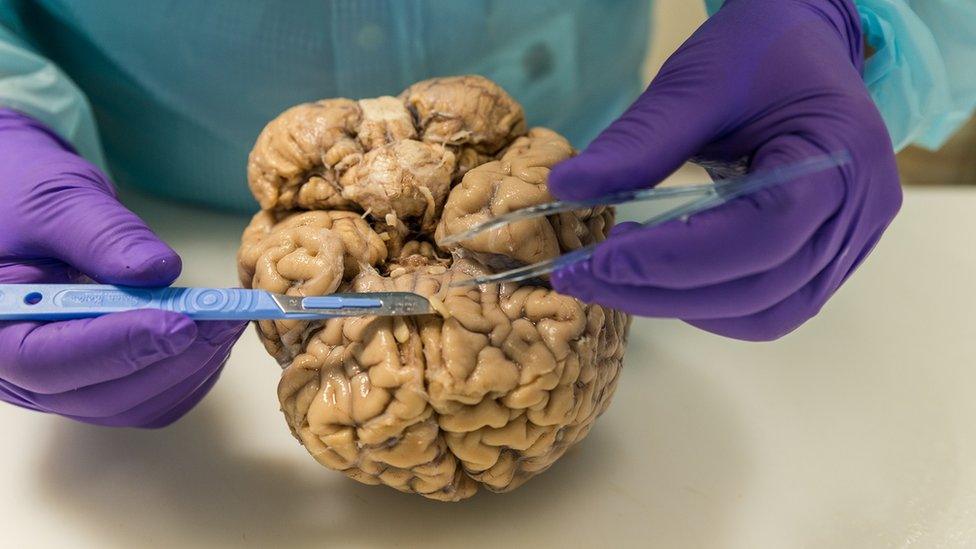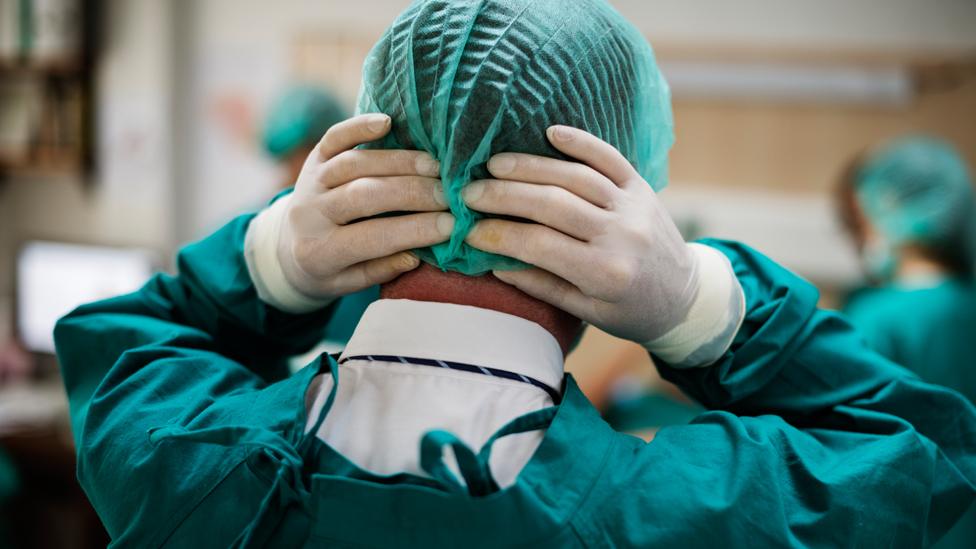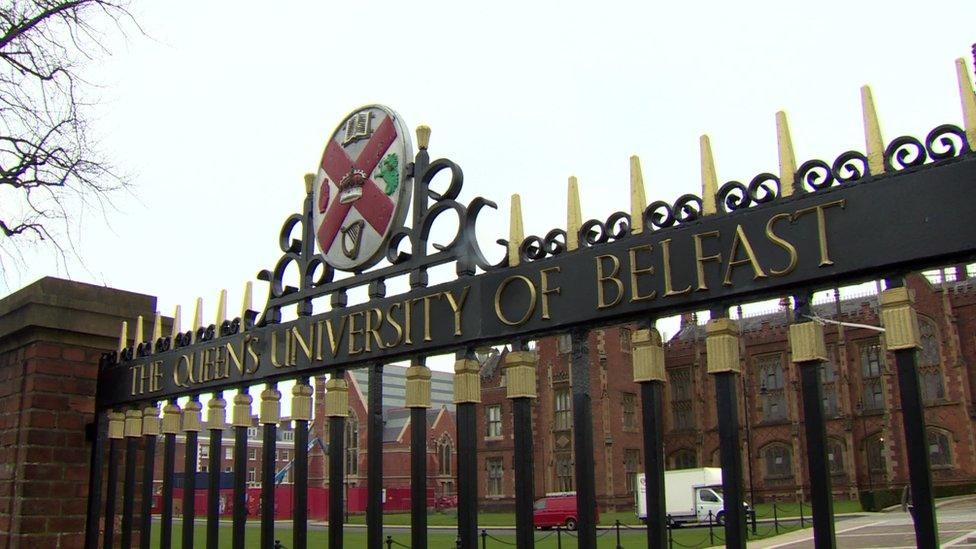Body donation: The lessons learned from the dead
- Published

Making end of life plans and discussing death can be difficult for many and taboo for some.
But about 100 people each year in Northern Ireland make a conscious decision, hoping their death can benefit others.
They decide to bequeath their bodies to Queen's University's medical school.
To medical and science students studying anatomy, they are known as the "silent teachers".
Dr Samantha Taylor, an anatomy specialist who lectures at QUB's Centre for Biomedical Sciences Education, said she "could not put a value on what they teach us".
"I tell my medical students when they start every year that they are taught by me, by my colleagues and by the clinical demonstrators and that they are also taught by their silent teachers," Dr Taylor told BBC News NI.

Cadaver dissection has been carried out at Queen's since the mid-19th Century.
It's one of a number of medical schools in the UK currently licensed by the Human Tissue Authority (HTA) to use donated bodies.

About the HTA
The HTA licenses and inspects organisations where bodies are donated for medical research.
There are 19 institutions around the UK which accept body donations, with people usually choosing the nearest one to their home or to an area they are originally from.
"The HTA's role as the regulator is to ensure medical schools meet our licensing standards, ensuring that bodies are treated with dignity and respect, and that they ensure consent is in place," an HTA spokesman said.
"There is a requirement in law that an individual has to provide witnessed written consent whilst alive that this is their wish, this is one of only two purposes under the Human Tissue Act, external where this is required - the other being if you consent to having your body, or body part, to be on display to the public after you die.
"Unlike organ and tissue donation, it cannot be consent on your behalf once you die, even if you family know this was your wish."

Dissection is, according to Dr Taylor, the "gold standard method of teaching and learning" anatomy.
"The experience our medical students or indeed any medical students anywhere in the world get from dissection, from anatomical examination, what they gain from it, the knowledge they will use to treat and diagnose, you cannot truly estimate its worth," she said.
About 250 enquiries are lodged each year with the school, with people keen to find out how the process works, what it entails.
On average, about 100 signed consent forms are returned to the bequeathal secretary at Queen's anatomy office each year. , external
The school receives about 30 bodies annually.

Often a desire to help the next generation of medics is the most common reason for a person's decision to bequeath their remains.
"If an individual has been ill themselves, this is a way of giving back to the medical profession, or they may have actually heard of someone else bequeathing their bodies and again they see it as a way of giving back, of training the next generation of doctors," said Dr Taylor.
The anatomical insight donors afford students is beyond compare, she said.
"There are just simply no words to explain what it is for someone to make the decision to leave their body to our medical school, and for their remains to come to us, the gift that they give to our students and to members of the public, it is just incredible."
'Journey of exploration'
What students learn in the dissection room "will really help them in the clinical environment," she said.
"I always tell students, the body of each donor will give up information, information that will be vital for their safe clinical practice in the future.
"Dissection takes you on a journey of exploration. It really helps students really understand the application of knowledge.
"Say you are going for a blood vessel, you will often have to move other structures out of the way to go find that vessel, you will be interested in exploring where that vessel supplies in terms of muscles and joints for example."

The School of Medicine at Queen's receives about 30 bodies every year
Respect and dignity and confidentiality are "the cornerstone of what we do", she said.
"Towards the end of the academic year, my colleagues will start to make the funeral arrangements and they are always in keeping with the wishes of the deceased," she added.
Physicians have been studying anatomy by dissecting cadavers since the 3rd Century BC.
It would later become taboo in many cultures across the world before again becoming central to anatomical study in Renaissance Europe.
In the 19th and 20th Century anatomy became more scientific, as surgery became more prevalent.